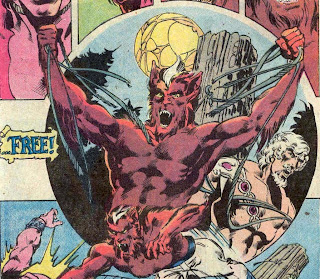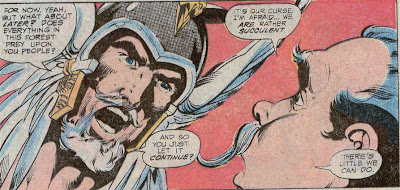In coming up with my own take on the classic planes--one that uses both AD&D cosmology and real world occult/esoteric beliefs as touchstones--I thought I’d start small with the microcosm of the individual. Coming as it does from relatively modern beliefs, the explanations in this model might not fit all campaigns, but the basic principles can probably be applied.
The body of an individual occupies multiple states of existence (or planes). The physical body, made of simple, everyday matter, is just the densest level of being. The
subtle body of an individual, though not normally visible and made of “lighter” material, is no less integral. When the subtle body is separated from the physical for whatever reason, it’s tethered to its densest component by an umbilicus called a
silver cord.
There are two parts of the subtle body. In order of decreasing density they are the
etheric body, a being’s “shadow” in the substructure of the material planes; and the
astral body, a being’s manifestation in the higher, noumenal worlds.
The Ether
The etheric body is generally invisible to the physical world, existing at a different vibrational frequency. It’s formed by the accretion of ether--the substance that is substrantum or medium supporting the material universe--or perhaps, as some theorist’s suggest, it would be more accurate to say it’s the area where the existence of a being deforms the geometry of the etheric plane.
It’s believed to be the etheric body that gives the spark of life to base chemical processes, and acts as the interface between mundane matter and higher states of being. To those able to see it, the etheric body appears as cloud-like aura vaguely in the shape of the being to whom it belongs; with sapient beings have thicker etheric bodies than nonsapient ones. The etheric body is just as mortal as the physical one. When a being dies it gradually disperses (usually over a matter of hours) until it is lost in the surrounding ether.
The etheric (or sometimes ethereal) plane is really the “canvas” on which the material world is painted--the matrix in which it crystallizes. The elemental forces are carried through the ether--or perhaps they excite it in certain frequencies. Some theorize that the etheric body is “vitalized” by the action of a
positive energy. Undead might therefore be animated by
negative energy. In this view, these forces cause flows or vortices in the ether in opposite directions.
The etheric body can be separated from their physical one via magical items or psionic discipline. Some spells or magical items allow the transformation of the physical body into an etheric form. Since the etheric is just part of a material world (only a different phase) there isn’t any such thing as the “deep ethereal”—at all points it is coexistence with the physical. However, sometimes this term can be appiled to the relatively less populated etheric regions coinciding with the vacuum of space.
Otherwise, this view of the etheric plane mostly conforms to the usual
D&D traits and strictures. The plane appears as an all but featureless place of roiling grey and white mists (sorta like the
Phantom Zone). Entities inhabiting it are likewise ghostly and indistinct--though they sometimes possess translucent colors, particularly the bizarre etheric fauna which often resemble oversized microscope creatures or deep sea denizens. The material plane can be observed from an etheric vantage, but it's as if its behind a veil of mist, or in soft focus. Etheric beings can pass through nonmagical inanimate objects in the material plane, but living material beings are barriers. While there is "up" and "down" in the ether, there is no gravity, and movement can be in any direction. Physical beings fully converted to etherealness can move faster than their normal movement, but to do so causes vibrations in the ether that attract the attention.
When next I take up this subject, I’ll delve into the Astral.



























































